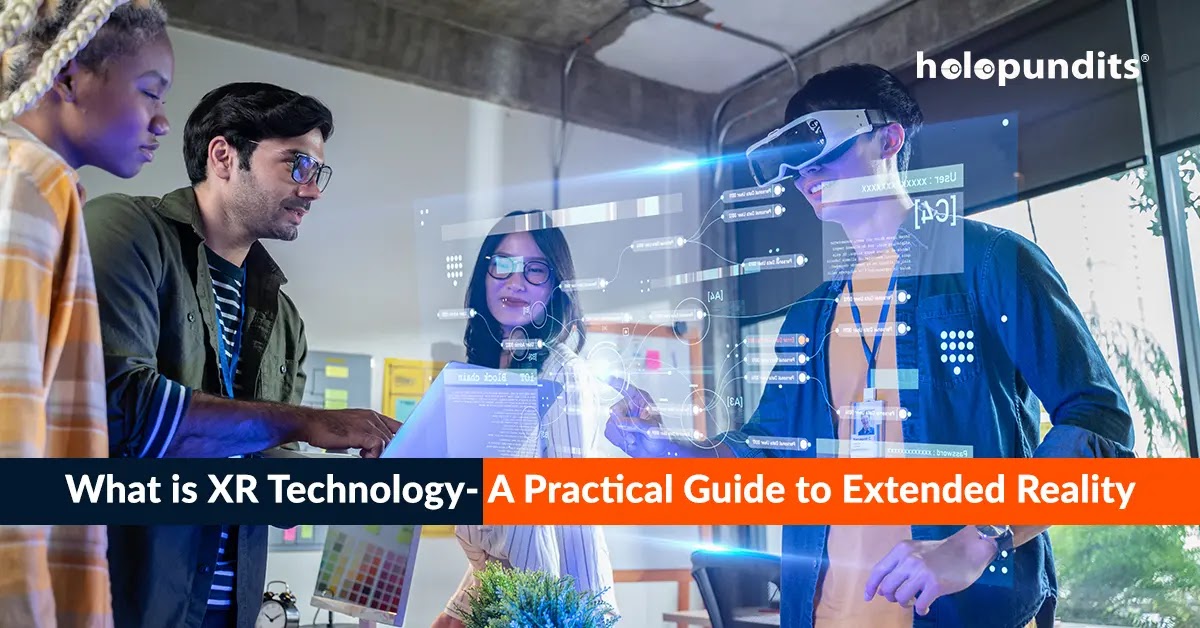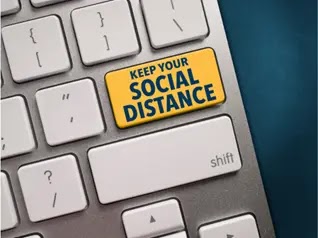What is XR Technology- A Practical Guide to Extended Reality

What is Extended Reality?
Extended reality is a form of digital reality used to supplement or eliminate the physical world. It's a way of enhancing the world around us. Using digital imaging, XR technology can add context and understanding to physical scenarios with augmented reality. Using the same sort of imaging, virtual reality can create an entirely digital environment for the user.
Those are two forms of extended reality, but there is a newer third form that combines both AR and VR. This technology is intuitively called mixed reality (MR) and uses the best qualities of both AR and VR to interact digitally with the physical world.
Extended reality is a spectrum of digitally immersive technologies designed to enhance the world we live in. The three technologies differ mostly in their type and level of immersion, and the type of display used to access it. Using XR, companies are able to gamify training and education, leading to better memory retention and learning outcomes.
Benefits of and Uses for XR Technology
Extended reality can be used in many sectors with multiple advantages for each. These advantages and use cases include (but are not limited to):
- Gamification of training and critical information
- Better memory retention and learning outcomes
- Enhanced customer engagement and experience
- Quick and efficient collaboration
- Reduced operational costs
- Safer training environments with low risk/high reward setting
It's also important to understand the potential risks and damaging effects of XR:
- Nausea and headaches associated with motion sickness (most commonly attributed to VR)
- Addiction and disconnectedness from reality
- Cost prohibition due to initial investment in equipment of XR services
- Potential intrusion into home environment with the ease of connectivity
- Socially toxic virtual environments
With these in mind, let's dive deeper into the separate aspects of XR technology and the best use cases for each.
What is Augmented Reality?
Augmented reality is a digital supplementation tool that overlays images, video, audio, and text onto a physical space to add context using a sensor, processor, and display such as a smartphone or AR capable hardware. This hardware is usually simple, like a pair of computing glasses, though it can sometimes be more complicated than that.
Augmented reality is most commonly used for marketing product and services like retail items. Ikea uses augmented technology to help customers decide on furniture. It's also used in navigation, as well as translation services in foreign countries. Educators also use augmented technology to reinforce concepts and provide a new way of teaching course material. Those most likely to use AR are educators and students, travelers, social media users, and customers.
What is Virtual Reality?
Virtual reality is a digitally immersive technology that eliminates the physical space around the user by creating an entirely digital environment with which to interact. There are three levels of virtual reality immersion that change its capability and the way that somebody would use the technology:
- Non-immersive VR utilizes a computer-generated virtual environment, but gives the user the ability to remain completely aware of the physical space. Computers and gaming consoles operate as the processor, while monitors act as the display to give the user a non-immersive digital experience. Often overlooked as a VR technology because of its already active use in everyday life (videogames are a common example), it differs from standard television because the user can interact and influence the virtual environment directly by changing environmental settings, characters, and actions to suit their taste.
- Semi-immersive virtual reality is a step further into the digital world. This level is often used for training and education purposes, because of the ability it gives the user to remain aware of the physical environment while interacting with the digital environment. Using semi-immersive VR experiences still eliminates outside distraction, providing a valuable way to focus on information.
- Fully immersive virtual environments are the most virtual experiences a user can have without physically putting themselves into a digital environment entirely (think "The Matrix" or "Don't Worry, Darling"). As the deepest level of immersion, it uses the greatest amount of gear in order to eliminate any sensation or connection to the physical world. Head mounted displays (HMDs) use display and sensory technology to project realistic simulation experiences, Users combine auditory and visual sensation with motion plates or chair that add to the simulation, giving the user the sensation of being in the simulation instead of physically grounded.
Virtual reality is most commonly used by those in the entertainment industry; however, other people have found uses for the technology in healthcare, manufacturing, and construction. Virtual reality therapy (VRT) has been seen increasingly more often in exposure therapy for situational anxiety. Architects and manufacturing warehouse designers use VR to create floor plans and process layouts to help reduce design and production cost, and avoid costly remodels.
What is Mixed Reality?
Mixed reality is exactly what you'd expect in this context- a mixture of both augmented and virtual reality. If XR is a spectrum of digital reality, with complete digital immersion at one end, and digital supplementation at the other, the middle ground is a spectral mix of the two. Mixed reality combines benefits of both AR and VR to create something new. This technology allows the user to physically interact with a digital rendering of the physical world in front of them.
Mixed reality uses HMDs similar to VR headsets, but where VR headsets immerse the user into a virtual world, MR headsets track a user's space and surroundings to give an accurate digital depiction of objects around the room that the user can then move and interact with virtually. Using stereoscopic and holographic displays, the HMDs are able to create realistic surroundings that connect to the physical world. With this new technology, users can blur the lines between the digital and the physical.
Like virtual reality, those most likely to use mixed reality are manufacturing professionals. Using a method called digital twinning, they can create realistic models of systems, products, and machines to test and provide technicians with information needed to resolve technical issues. Communication, e-learning, and retail professionals can also use mixed reality experiences to eliminate barriers between users and create a better system of collaboration.
Top Players in the XR Industry
Three of the main companies working in XR development are Sony, Microsoft, and Oculus, but with every year comes a new round of companies adding their take on the technology that's rapidly changing everyday processes. Newer groups like Varjo, Infineon, and Meta are working tirelessly to create better computing power, more accurate digital displays, and XR experiences for the world to enjoy and benefit from.
The concept of extended reality isn't exactly new. Theorists have contemplated the digital experiences and their capabilities for generations. XR has been a staple in science fiction since the early 20th century, if not earlier. But the most powerful things usually start out small. XR technology had its humble beginnings almost two hundred years ago, and now it has found its way into almost every technologically modern home on earth. As the technology continues to grow and develop, companies will make it possible for the technology (and information as a result) to be more accessible to everybody.



Comments
Post a Comment